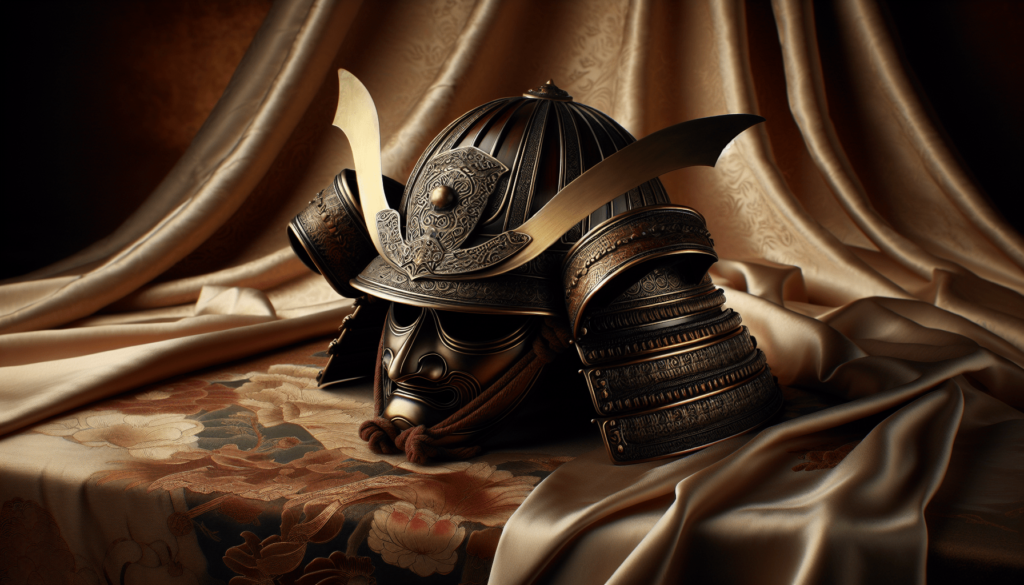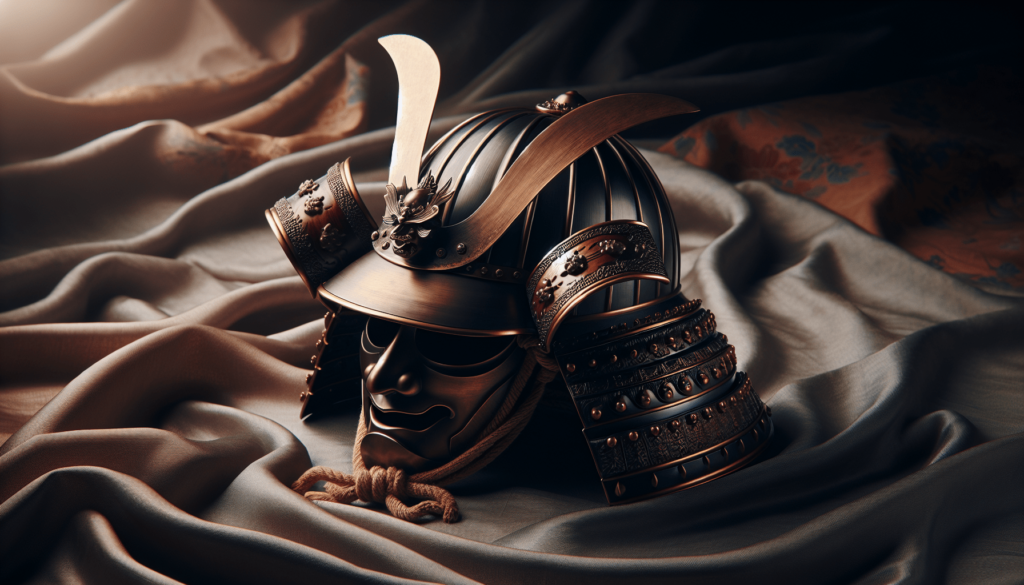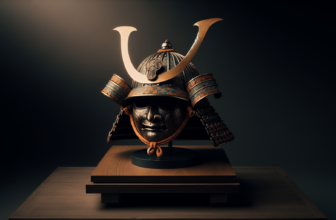
Can you wear a real samurai helmet? This question might float around in the back of your mind, especially if you’re fascinated by Japanese culture and history. Samurai helmets, known as “kabuto,” are not only beautiful pieces of craftsmanship but also an essential part of samurai armor. If you’ve ever wondered about their significance, usability, and cultural context, you’re in for a treat. Let’s uncover the history, usage, and the possibility of wearing one of these magnificent helmets yourself.
The Historical Significance of the Samurai Helmet
Samurai helmets hold immense historical significance in Japan. Originating in the 15th century, these helmets were designed for protection during battles. Over the years, they evolved into intricate works of art.
Evolution of the Kabuto
The kabuto underwent several changes throughout different periods of Japanese history. Initially, they were quite simple, but as time progressed, they became more ornate. Here’s a brief overview of the main evolution phases:
| Period | Characteristics |
|---|---|
| Heian Period | Simple designs, primarily functional. |
| Kamakura Period | Introduction of elaborate decorations and crests. |
| Muromachi Period | Fully developed helmet shapes with unique styles. |
| Edo Period | Exceptional craftsmanship and ceremonial use. |
As you can see, the kabuto transformed from purely protective gear to a symbol of status and artistry among samurai.
Materials Used
Samurai helmets were traditionally crafted from several materials, each serving both functional and aesthetic purposes:
- Iron or Steel: Strong and durable, providing protection.
- Leather: Used for fittings and lining, adding comfort.
- Lacquer: Commonly applied for decoration and weather protection.
- Fabric: Often used for the chin guard and to enhance comfort.
These materials were chosen carefully to ensure durability while displaying beauty.
Cultural Context: Wearing a Samurai Helmet Today
You might be wondering about the cultural implications of wearing a samurai helmet today. Understanding its context is essential.
Samurai and their Armor
Samurai were not just warriors; they were also revered figures in Japanese society. Their helmets signified rank and prowess in battle. Wearing a kabuto today carries with it the weight of tradition and respect for the historical significance.
Modern Perception
In contemporary times, the perception of wearing a samurai helmet has shifted. While some view it as a cultural artifact, others might see it as a fashion statement or a cosplay accessory.

Can You Wear a Samurai Helmet?
Now, let’s address the million-dollar question: can you wear a real samurai helmet? The answer is more complex than a simple “yes” or “no.” Here are some factors to consider.
Legal Considerations
In many countries, wearing historical armor or weapons is regulated. Depending on where you are, there may be laws concerning the display or wearing of such cultural artifacts.
- Japan: There are strict laws regarding the handling of historic items. If you’re in Japan and wish to wear a kabuto, you need to be cautious about how you do it.
- Other Countries: Different nations have varying regulations. It’s always wise to check local laws before attempting to wear or display a samurai helmet.
Availability of Authentic Helmets
You might find authentic samurai helmets available for purchase, yet they often come with a hefty price tag. Authentic kabuto can be rare and highly coveted among collectors.
- Antique Shops: They might carry vintage kabuto, often restored to their original splendor.
- Online Auctions: Websites like eBay sometimes have listings for authentic samurai armor.
- Specialty Stores: Some shops specialize in Japanese antiques, including armor.
If you’re considering purchasing one, ensure that it is indeed authentic. Fake replicas are common in the market, so doing thorough research is crucial.
Quality of Reproductions
On the other hand, high-quality reproductions of samurai helmets are quite accessible. Many craftsmen specialize in creating replicas that are suitable for wearing. Here are a few places where you can find good reproductions:
| Source | Description |
|---|---|
| Online Retailers | Various websites specialize in reproductions, from budget to high-end models. |
| Cultural Festivals | Often have vendors selling replicas that are result of expert craftsmanship. |
| Martial Arts Schools | Sometimes provide or know of local artisans who would create or sell decent replicas. |
Reproductions can be a great option if you want the experience of wearing a samurai helmet without the cost and care that comes with an antique.
Understanding the Craftsmanship of Kabuto
The craftsmanship that goes into creating a kabuto is extraordinary. If you’re interested in wearing one, understanding what makes these helmets special can enrich your experience.
Design Elements
Each kabuto has unique design elements that convey messages about the wearer’s status, clan, and achievements. Some common design features you might notice include:
- Crest or Maedate: This is the decorative element placed at the front of the helmet. It often represents the samurai’s clan or family.
- Ridges and Lines: These are not merely decorative; they can also enhance the helmet’s strength and structural integrity.
- Chin Guards: Kabuto usually come with chin guards that help to secure the helmet during battles or wear.
Every design choice reflects both functionality and artistic expression.
The Art of Crafting Kabuto
Creating a samurai helmet is a meticulous process that takes a substantial amount of time and skill. Here’s a simplified overview of the steps involved:
- Designing: Craftsmen sketch out the design, considering both aesthetics and protection.
- Material Preparation: Sourcing materials like iron, leather, and lacquer.
- Shaping: Metals are heated and shaped into the desired form, a process that requires expertise and precision.
- Decoration: Applying lacquer and adding ornamental elements to finalize the helmet’s appearance.
This artistic process contributes to the uniqueness of each kabuto, making them not just helmets but pieces of art.

Wearing a Samurai Helmet: What to Know
If you decide to wear a samurai helmet, there are several practical considerations to keep in mind.
Balance and Comfort
Wearing a helmet can be weighty and may require some adjustment. Here are some tips to ensure comfort when wearing a kabuto:
- Fit: Make sure the helmet fits snugly. A loose helmet can be uncomfortable and may not stay in place.
- Padding: Consider adding extra padding for comfort, especially if you plan to wear it for an extended period.
Situational Appropriateness
Think about where and when you plan to wear your helmet. Samurai helmets are often associated with specific events, such as:
- Cultural Festivals: Many festivals celebrate Japanese culture where wearing a kabuto is more accepted.
- Costume Parties: If it’s a themed party or cosplay event, wearing one could enhance your experience.
Being considerate of the context will help ensure that your choice to wear a kabuto is both appropriate and respectful.
Caring for Your Helmet
If you get your hands on a kabuto, maintaining it is essential. Proper care will not only preserve its condition but also respect its historical significance. Here are some maintenance tips:
- Cleaning: Use a soft cloth to wipe it down gently. Avoid using harsh chemicals that could damage the lacquer or metal.
- Storage: Store your helmet in a cool, dry place, away from sunlight. Consider using a display case if you want to showcase its beauty without risking damage.
Proper maintenance keeps the helmet looking its best and honors the craftsmanship that went into it.
The Impact of Wearing a Samurai Helmet
Wearing a samurai helmet isn’t just an act; it carries cultural weight and historical narratives. It can invoke feelings of respect, fascination, and even connection to the past.
Embodying the Spirit of the Samurai
When you wear a kabuto, you’re stepping into a rich narrative filled with values such as honor, courage, and loyalty. The samurai way of life embodies principles that resonate even today, making the helmet a symbol worth contemplating.
Engaging with Japanese Culture
Your choice to wear a samurai helmet can be a way of engaging with Japanese culture respectfully. Being knowledgeable about its roots can help others appreciate your connection to this significant part of history.
Conclusion
So, can you wear a real samurai helmet? The answer is both yes and no, depending on various factors such as legality, availability, and context. You can undoubtedly enjoy wearing reproductions and immerse yourself in the rich cultural heritage they represent. Whether you’re considering it for educational purposes, a costume party, or just because you admire their craftsmanship, remember to approach this practice with respect and understanding.
The world of samurai helmets is one filled with artistry, history, and culture, waiting for you to engage with it in meaningful ways. If wearing one feels right for you, ensure that you honor the essence behind this remarkable piece of history.




